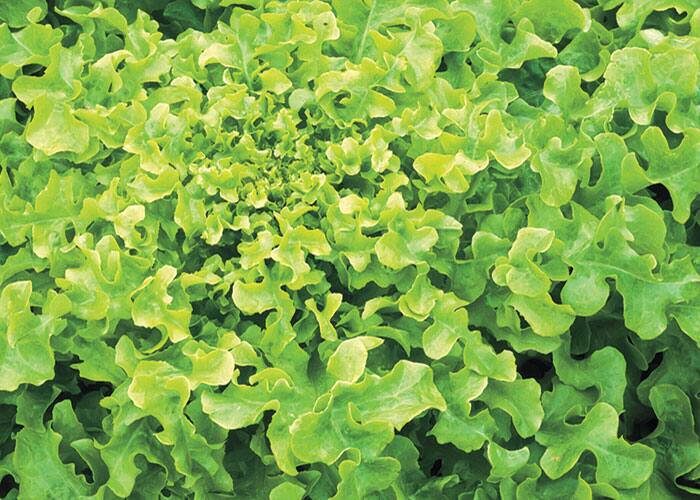Gardening
The veggies you can grow now and enjoy later

Photography by John Glover
Gardening
The veggies you can grow now and enjoy later
These five season-extending veggies for mid-to late summer sowing can grace your table until Thanksgiving.
Radishes
Radishes are the first vegetable that many kids grow, since most "summer" varieties go from seed sowing to harvest in about three weeks, providing almost instant gratification. Summer radishes are "short-day" crops, and they'll bolt if daylengths exceed 15 hours. Summer types are also sensitive to heat, but once daytime highs fall below 27°C, radishes are ready to return. Sow summer radish seed in mid- to late summer every 10 days until about 20 days before your region's first expected frost date. When the roots are about two centimetres in diameter, harvest the entire crop (radishes left in the ground too long become corky and hot). "Winter," or Asian, radishes (daikon) are more tolerant of long daylengths and midsummer heat. Although they stay in the ground twice as long as red-skinned types, these mild white roots are just as easy to grow. Sow seed at 10- to 14-day intervals from midsummer until about 50 days before your area's first expected frost date.

Photography by Stacey Van Berkel
Bush Beans
Bush (or snap) beans are the second most widely planted vegetable (after tomatoes) in Canadian gardens, and with good reason: They're compact and easy to grow, and seeds can be planted successively, virtually guaranteeing a steady supply of fresh nutritious beans from early summer to autumn. While most gardeners will have already harvested their first crop by now, beans can be planted as long as soil temperatures remain below 25°C at a depth of five centimetres (sow midsummer seed deeper than spring seed to take advantage of cooler, moister soil conditions). Adding an organic mulch (shredded leaves, straw) will further help keep the soil cool and retain moisture. Bush beans have a fairly short harvest period (two to three weeks), so plant fresh seed every 20 days, up until 50 days before your first expected frost date. Beans (just like peas) are legumes, and they enrich the soil as they grow by fixing atmospheric nitrogen through nodules on their roots. To discourage any pathogen buildup, avoid sowing midsummer seed in the same soil as spring-sown seed.

Gap Photos
Carrots
The sugar content of carrots begins to drop as soon as they're pulled, so the most flavourful roots will always be the ones you grow yourself. Although carrots are a cool-season crop, midsummer plantings are just as successful, providing they're grown in moist, well-mulched soil. "Short-day" European novelty carrots can't be planted until daylengths are less than 15 hours (mid-July in many regions), or plants will bolt. In midsummer, sow seeds more deeply than in spring (one centimetre is ideal) and cover them with a light layer of compost or sand for easy seedling emergence. Sow more seed at 20-day intervals, continuing up to about 55 days before your area's first hard, or "killing," frost. Carrots are at their sweetest and juiciest when young, so it's not necessary to wait until they've reached maturity before you start harvesting. However, even mature carrots can be left in the ground or several weeks before they begin to get tough.

Photography by John Glover
Tip: Overly wet soil conditions produce short, stubby carrots, while drought will cause the roots to fork.
Leaf Lettuce
Another cool-season crop, lettuce tends to bolt when summer highs consistently top 21°C. Fortunately, high-yielding leaf lettuce matures quickly, so there's still time to enjoy a bountiful second harvest once the worst of the summer heat has passed—picking the outside leaves of heat-tolerant loose-leaf types begins long before the plant's maturity date. Seed sown in mid- to late summer at two-week intervals will supply you with salad greens until autumn; sow your final crop about 35 days before the first expected frost date in your region. Because lettuce is mostly water, it's intolerant of drought; water regularly during dry spells.

Gap Photos
Tip: Lettuce should be harvested regularly and frequently. Once plants have matured, they quickly lose their flavour and nutritive value.
Beets
Easy-to-grow beets do double duty in the vegetable garden—both their roots and leaves are edible. Largely pest-free and frost-tolerant, the first crop of beets will already have been harvested by most Canadian gardeners, but these sweet, colourful root vegetables continue to grow well until daytime temperatures consistently exceed 27°C. Once the hottest part of the summer has passed, beets are once again good to go. Like beans, during late summer, sow seed deeper (three centimetres deep, rather than one centimetre in spring) to avoid hot, dry conditions at the soil surface. Sow your final crop about 55 days before your region's usual late autumn hard frost date. Once the roots begin to push above the soil surface, check their diameter by brushing away the surrounding soil. Harvest beets when they're about five centimetres in diameter (larger roots quickly get fibrous and stringy).
















Comments